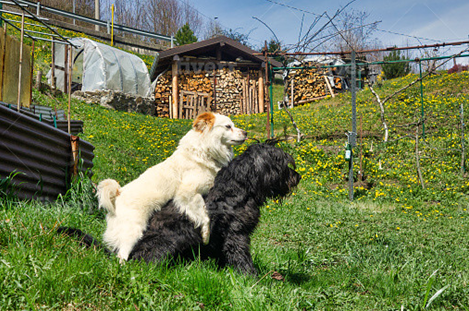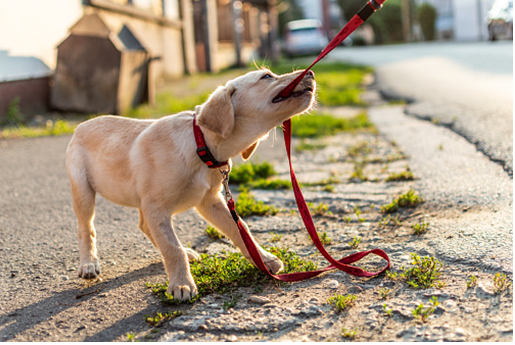Tips On How To Breed A Dog

Dog breeding is the act of mating selected dogs with the aim of maintaining or producing specific qualities and attributes. Dog breeding is an act of bringing together of a stud (male) and a bitch(female) during the fertile portion of the bitch’s heat cycle in order for the animals to mate and produce a litter.
Breeding depends on the science of genetics, so the breeder must have a knowledge of genetics, health, and the intended use for the dog’s attempts to breed suitable dogs. No breeding should ever be done lightly, they should be given serious consideration before proceeding.
METHODS OF BREEDING
In achieving a successful breeding process, you have to undergo two different methods which are;
- Natural method
A natural breeding method occurs between the stud (male) and the bitch (female) with little or no human intervention. The male climbs the bitch from behind and starts to mate with her. The sperm are usually supplied during the period of the “tie. The sperm will then move deeper and either meet up with the ovum for fertilization or attach themselves to the uterine wall and wait for the hormonal signal that lets them know the ovum have been released. They will then run toward the ovum in an attempt to be the first one to fertilize them. Once a sperm fertilizes an egg, no other sperm can penetrate it. The fertilized eggs then insert themselves at gaps along the uterine horns where they will continue to develop until it’s time for delivery.
- Artificial Insemination method
An artificial insemination method can be carried out whenever a natural breeding is either impossible or unacceptable. A veterinarian collects sperm from a male and uses a syringe equipped with a catheter to supply the sperm to the female’s uterus. The catheter is threaded into the vulva while taking care to avoid the bladder. The sperm is then slowly evacuated, and the bitch is kept quiet for about an hour to help make sure that the sperm reach their destination. Fertilization will take place and a litter will develop.
When these breeding practices are successfully carried out, the gestation period lasts roughly for about 62 days. Next is the delivery which can take place as early as 58 days gestation, though pups born this early may be a little premature and are normally known by the bright pink skin tone of their furless paws. When these pups are given serious attention when nursing them, they survive very well.
How To Train Your Dog

Dog training is the act of teaching a dog specific attitudes in reacting to certain commands and also to act separately by knowingly changing their normal behavior. Training helps you bond with your dog and also build a good relationship. Training lets you enjoy a wide variety of activities and dog sports. A trained dog will partake in the fun when friends and other family members visit you, go for hikes, beach walks, swims, and everything else that the family does together.
BENEFITS OF DOG TRAINING
- It gives the dog good mental stimulation and physical exercise.
- It improves the communication between the dog and the owner.
- It strengthens the human-animal bond.
- It gives the dog fundamental good manners.
- It helps your dog get use to other dogs, people, sounds and noises.
SIMPLE TIPS TO TRAIN A DOG
- Give your dog a pet name (obviously)
Pick a name for your pet, ensure the name is not a long one and it must be a name that must be heard clearly. Dogs are extraordinarily adaptable, when you use that name to call them consistently, they would be used to the name.
- Teach your dog basic obedience
Dog’s basic obedience like sit, wait and coming back when called gives them the freedom to do the things they like to do, like running off leash and coming with you to meet friends and family, while being safe and under control. Dogs are intelligent animals and training them to obey simple rules can be a great way of stopping them from getting bored.
- Reward your dog’s behavior
Reward your puppy or dog’s good behavior with positive augmentation. Use treats, toys, love, or heaps of praise. Let him know when’s he’s getting it right. Likewise, never reward bad behaviour; it’ll only confuse him. Puppies love to jump up in greeting. Don’t stop him, just ignore his behavior and wait ’til he settles down before giving positive remarks. Never encourage jumping behavior by patting or praising your dog when he’s in a “jumping up” position. Turn your back on him and pay him no attention.
- Socialize him with others
Socializing your dog with others means training your dog to accept new people, animals, and various places by exposing him to these things. Socialized dogs are less likely to develop behavior problems and are generally more welcomed by others. It makes them very happier and well behaved. It can also help prevent the development of fears and phobias.
- Teach him not to bite
Instead of scolding him, a great way to put off his sharp teeth is to pretend that you’re in great pain when he’s biting. He’ll be so surprised he’s likely to stop immediately. If this doesn’t work, try trading a chew toy for your hand or pant leg. He’ll prefer a toy or bone anyway.
Why Police Love German Shepherds

German Shepherds are medium to large-sized dogs. They are longer than they are tall, with an ideal proportion of 10 to 8 1⁄2. They have a domed forehead, a long square-cut muzzle with strong jaws and a black nose. The eyes are medium-sized and brown. The ears are large and stand erect, open at the front and parallel, but they often are pulled back during movement. It has a long neck, which is raised when excited and lowered when moving at a fast pace. The tail is bushy and reaches to the hock.
German Shepherds are naturally bred to work, they are typically intelligent (one of the world’s most smart breeds), they are quick to train, obedient and loyal, athletic and healthy, and even-tempered.
Over the years, they have been known to be a great toll in the police department for chasing criminals and much more. The reasons for their efficiency may include;
- German Shepherds are extremely very loyal to their handlers and always want to please them. That’s why they look to their owners for ideas about what to do in stressful situations.
- German Shepherds love to work and have a job to complete. They’re also driven to finish a job – and won’t stop until their handlers tell them the job is done.
- German Shepherds are one of the most intelligent dog breeds in the world. That is the main reason why they can be trained to perform highly complex tasks, like drug or explosive sniffing, tracking and detection.
- German Shepherds are bred to “keep their head,” even in high-stress, chaotic situations. Even in the bustle of an active crime scene or in pursuit of a criminal, German Shepherds follow their handler’s commands.
- German Shepherds are natural protectors and are committed to protecting their “pack,” e.g., their handlers. They are commonly are the first to act, when a criminal becomes aggressive.
- German Shepherds are a very strong, athletic dog and also have an abundance of energy. They’re fast, able to take down criminals, and they’re happy to work for long periods of time.
